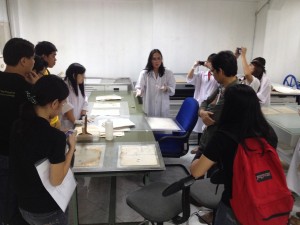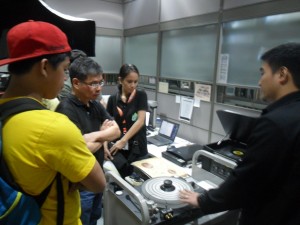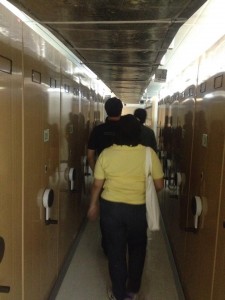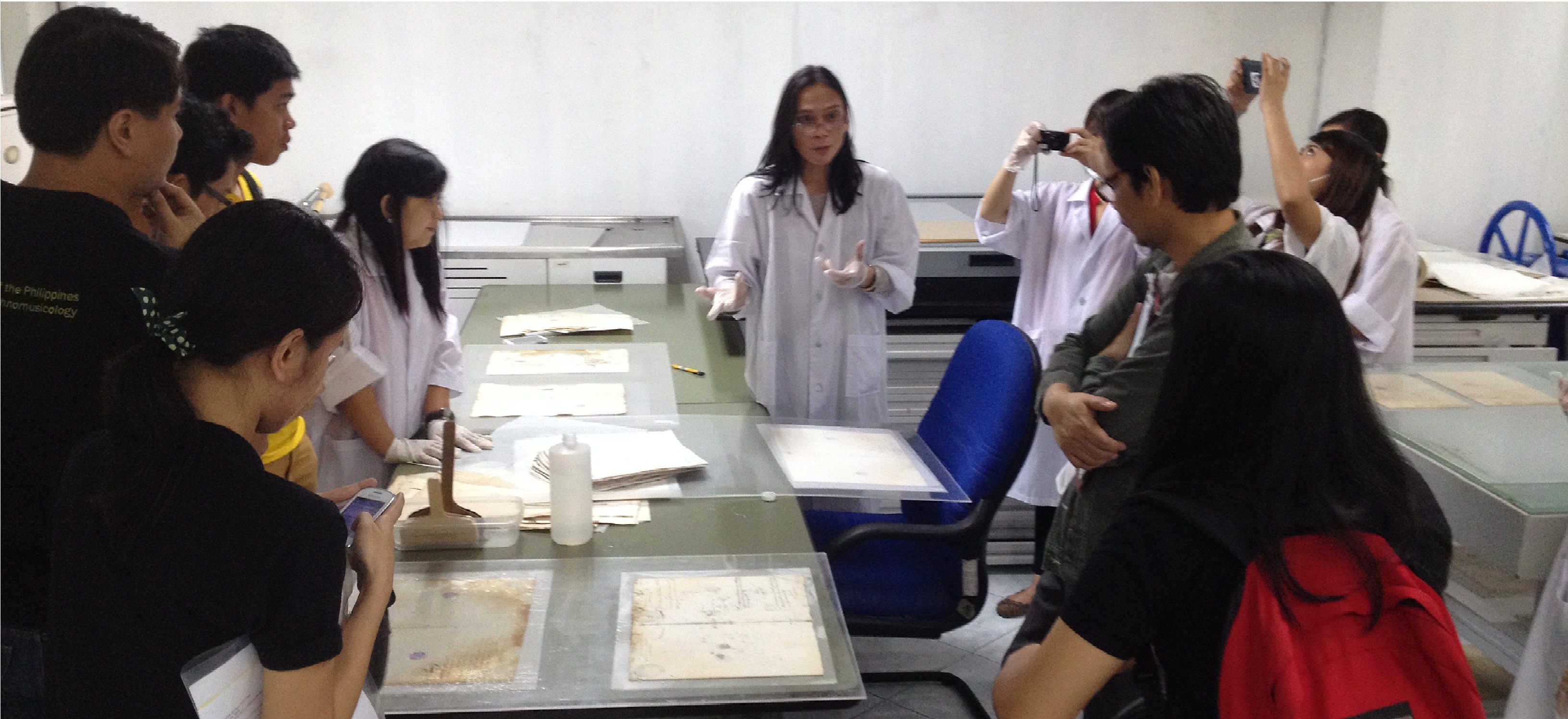The UP Center for Ethnomusicology recently conducted its staff enrichment, training, and development program by visiting various libraries and archives around Metro. The one day trip was organized for the staff to observe the preservation, digitization and other practices of the other institutions; compare them to the processes the Center has; and identify what may be applicable to improve the services and practices of the Center.

Tracing its conception to the 1898 Treaty of Paris, the National Archives is primarily tasked with preserving the primary sources of information on Philippine history, the basic components of cultural heritage and collective memory. A tour through the institution showed a collection of primarily print materials as the UPCE staff were shown the various facilities, namely: the storage area, the admin section, where they also digitize their collection; and the preservation laboratory. Of particular note was the storage and paper conservation methods of the NAP, as the UPCE staff showed marked interest on the workings of the paper conservation laboratory and an animated rapport developed between the laboratory and UPCE staff members regarding the process of conservation, repair, and preservation of print documents.
The next institution on the agenda was the Ayala Foundation’s Filipinas Heritage Library (FHL), located at the 6th floor of the Ayala Museum. The FHL houses materials by Filipino authors or about the Philippines. Their collection is not, however, limited to only print materials as the library also houses audio recordings in various formats, video recordings, photographs and other realia related to the Philippines. While also having a paper conservation laboratory, the Center’s staff gravitated more to the FHL’s digitization lab. Since the Center also has digitization services, the staff took note of the equipment used by the FHL and discussed at length with the FHL staff on the output parameters of their digitized files.

The third and last institution visited was the ABS-CBN Film Archives. As the name suggests, the majority of the archives’ collection is in film format from companies such as Regal Films, VIVA Films, Star Cinema, and others. However, they also hold costumes, props, and other realia used in films. The UPCE staff were toured through the facilities of the Archives, the administrative section, receiving area, digitization room, and so on, and was even able to observe samples of digitally restored films (a result of the ABS-CBN Film Restoration Project), and user transactions. A memorable part was the tour through the Film Archives’ storage vault, split into two sections.

The medium term storage vault holds betacam tapes, U-matic, 16mm prints, some 35mm prints, and some realia, kept at temperatures maintained between 15 to 20 °C with 35 to 50 percent relative humidity; and the long term vault which holds 35mm master prints kept between 8 to 10 °C with 31 to 35 percent relative humidity. Each storage vault also has acclimatization rooms to minimize shock to the material when being removed from the vault for use or transfer.
The tour ended on a high note and the Center staff adjourned a bit more enlightened and more ready to face the challenges of the coming days.

